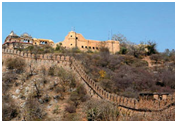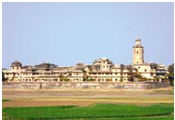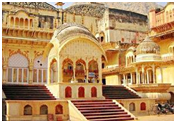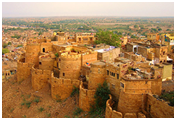PLACES TO SEE
Bala Quila also known Alwar fort is situated on a hill in the Aravalli Range, above the town built by Hasan Khan Mewati in 16th century. Within the fort are 15 large and 51 small towers perched on the ridgetop, 340 metres (1,120 ft) above the city. The fort included 446 openings for musketry, along with 8 huge bastions encompassing it. The ruins must have been magnificent in their time but now most roofs are gone plus many of the floors and there are trees growing in the main rooms.







